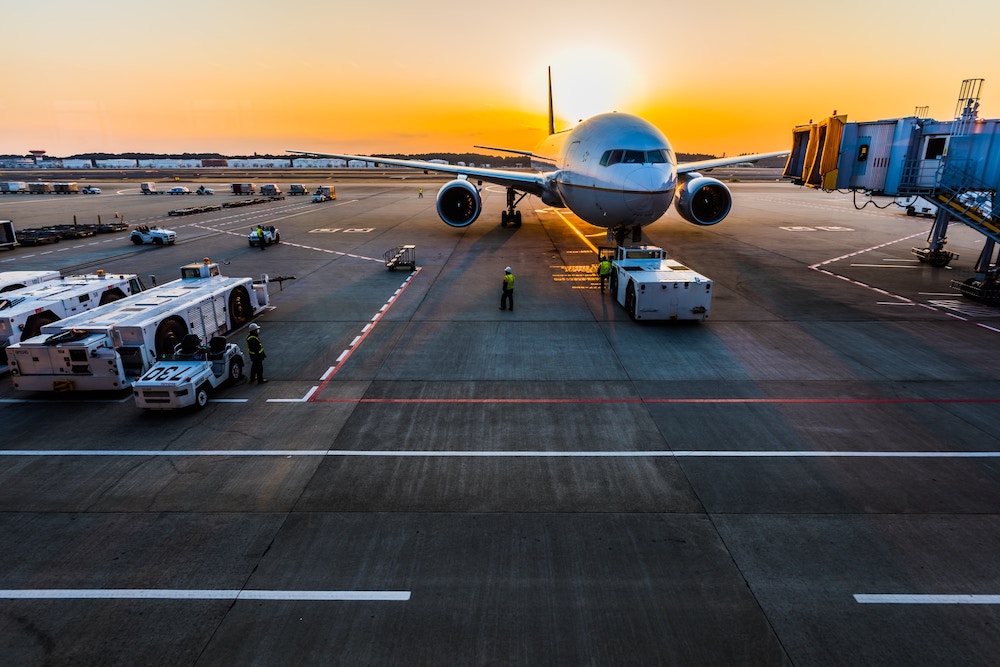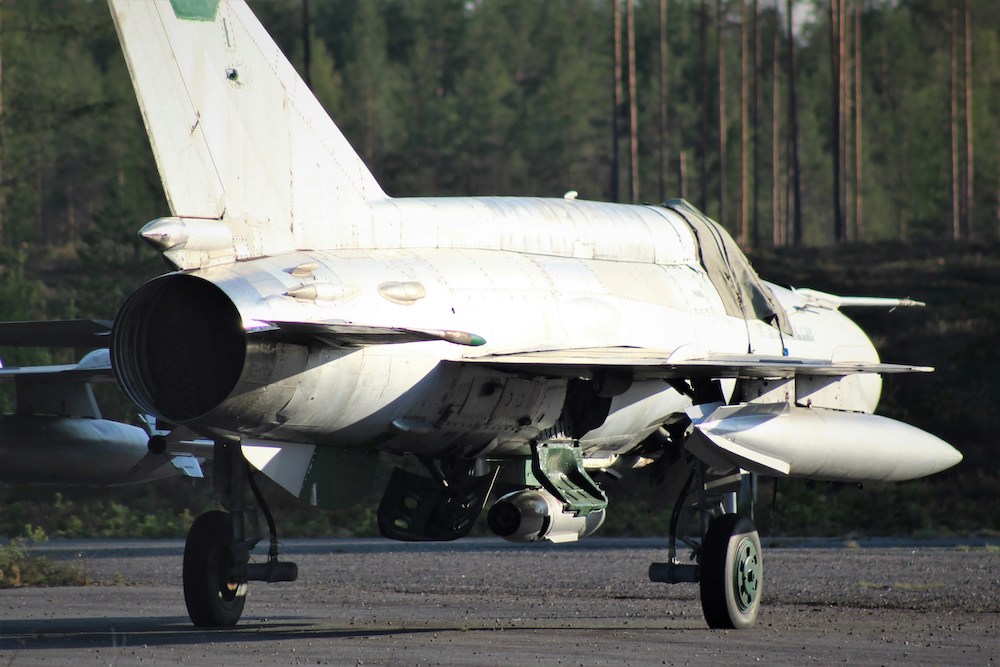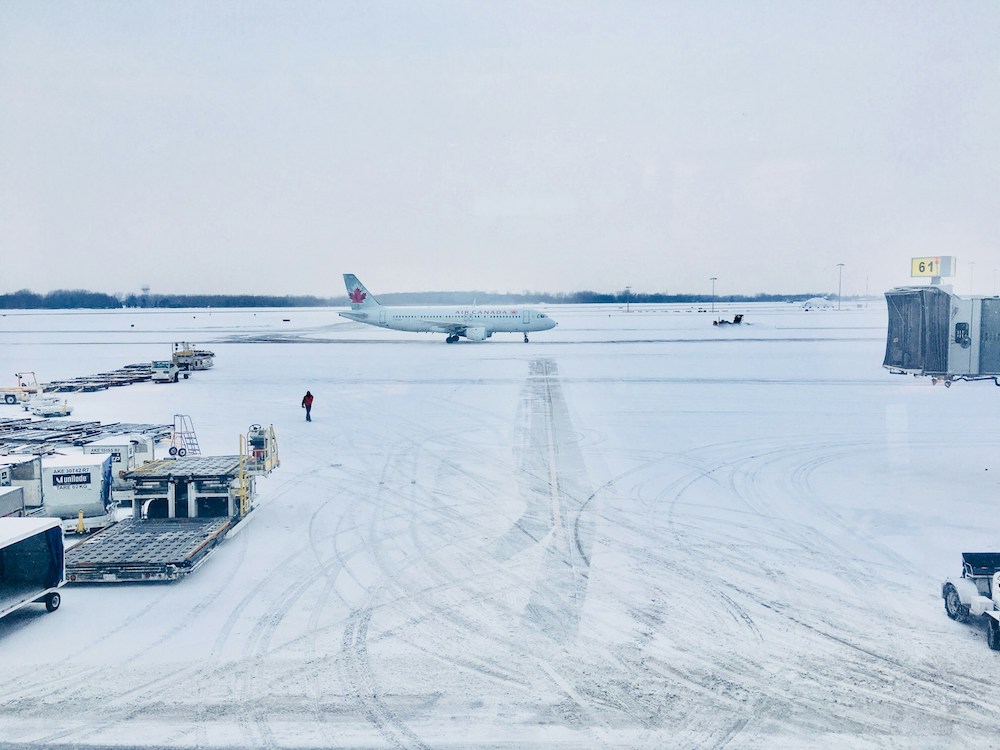
The aerospace supply chain is a complex system composed of multiple layers of companies that join forces, spanning from the early conceptual design of parts and materials through the high-volume manufacturing of equipment, and beyond. The different layers may include, but are not limited to:
- Small parts and materials suppliers
- Original equipment manufacturers (OEMs)
- Contractors (i.e., transport companies, warehouses)
- Repair and overhaul (MRO) providers
- Maintenance support teams
- Customers (i.e., aircraft operators)
The aerospace supply chain is composed of diversified companies, with customers from across the globe. Due to the complexity of the system and its worldwide span, many internal and external factors affect its productivity. Let’s discuss the challenges of the aerospace supply chain as we transition into the year 2024 and some potential solutions to help address these concerns.
Aerospace Supply Chain Challenges
The aerospace industry has faced significant challenges following the COVID-19 pandemic. As borders reopened and consumers resumed travel, the industry shifted from a state of near-zero demand to meeting skyrocketing needs. The accumulative effect has put significant pressure on aerospace supply chain companies, which is clearly visible through challenges like:
- Long lead times due to delays and disruptions in raw material component deliveries, manufacturing and assembly operations, and the transportation of finished products.
- Large inventory needs due to the post-COVID-19 pandemic skyrocketing demand.
- A depleting workforce due to an aging labor group, high turnover rates, and increased competition for talent capable of handling new and emerging equipment and technologies.
- Financial challenges for new programs due to high initial investments in new and emerging equipment and technologies.
- Strained collaboration across complex supply chains due to the various supplier tiers scattered across different countries and regions.
As we gear up for 2024, the aerospace supply chain is already under immense pressure due to surging demand, which is expected to persist in the coming year. Moreover, various external factors may also impact its productivity, including:
- High inflation rates which cauase an increase in the cost of parts, materials, and services. However, high inflation rates could also indicate an impending recession, which could have the opposite effect by slowing the flow of cash, parts, materials, and services in the approaching year(s).
- War ramping up around the world lead to continuous disruptions through inventory stockouts, hindered outsourced activities, and increased packaging and transportation costs.
- Shifts in manufacturers’ strategies and business plans, which encompass everything from closing factories to company mergers. While some developments may lead to greater production in the long-term, any change is bound to create short-term slow-downs.
- Major arteries of trade confront unparalleled challenges, such as the heightened threat of piracy in the Red Sea and the Panama Canal facing disruptive droughts in early 2024.
Aerospace supply chain companies face an uncertain future based on these and other challenges. Aircraft operators may find it more difficult to forecast the demand for air travel, which, in turn, makes it challenging for OEMs to confidently predict the long-term market for new aircraft and fleet upgrades and to ensure they will have the capacity, parts, materials, and labor to meet it. As a result, this has a ripple-down effect on the overall supply chain, affecting small parts and materials suppliers, contractors, MRO providers, and maintenance support teams.
Aerospace Supply Chain Solutions
To thrive in an increasingly challenging environment and attempt to survive while others struggle to proactively face an uncertain future, aerospace supply chain companies need to carefully scrutinize their management and supporting technology to ensure the resiliency of their supply chain. The top two solutions for supply chain challenges are to prioritize strategies for flexibility in the workforce and to take calculated steps toward modernizing manufacturing capabilities
This can be accomplished through:
- Digital innovation
- Talent retention
- Sustainable manufacturing
- Focusing on supply chain visibility and resilience
Let’s explore each aerospace supply chain solution further.
Digital Innovation
With new and emerging technologies, aerospace supply chain companies are expected to be more agile with production capabilities to navigate future disruptions. The following advanced technologies may enable aerospace supply chain companies to address operational challenges more effectively:
- Cloud
- Big data
- Artificial intelligence/machine learning (AI/ML)
- Digital twins
- Internet of Things (IoT)
These technologies can allow aerospace supply chain companies to:
- Automate production lines (e.g., smart factory)
- Develop more profound insights into the extended supply chains
- Improve predictive maintenance for delivering superior aftermarket service
Integrating the best of digital innovation and investing in cutting-edge technologies and platforms like ePlane can build resiliency in the short term while enabling a unique product offering for the years to come.
Digital Innovation Benefiting Suppliers
A smart factory is a cyber-physical system of interconnected machines, communication mechanisms, and computing power that use advanced technologies (e.g., big data and AI/ML) to collect and analyze data, drive automated processes, and learn as it goes.
The aerospace industry’s increased focus on shortening lead times, improving cycle times, and increasing factory efficiency has pushed many suppliers to embrace smart factory initiatives. A smart factory approach can help suppliers to adapt more quickly to demand fluctuations, supply chain adjustments, and changes in other parts of the supply chain. It connects the individual processes within and beyond production sites, from engineering to manufacturing and the aftermarket. Further, it can help to gain critical inventory visibility to ensure efficient production and faster design to delivery.
Digital Innovation Benefiting Customers
Aircraft parts and materials are a sizable chunk of any aircraft operator’s expenses; therefore, it is essential to keep these costs under control and the inventory strategically stocked. However, calculating the best timeframe for needing parts and materials can be challenging. As a result, many aircraft operators keep extensive spare parts inventories to optimize operational efficiency, which can result in high overhead costs.
With big data and AI/ML, however, aircraft operators can apply appropriate maintenance strategies (i.e., reactive, preventive, or predictive) and, in turn, predict exactly when and where spare parts and materials will be needed for the specific maintenance needing to be done. Based on the given maintenance needs and real-time market insights from tools like ePlane, aircraft operators can optimize stock levels, control costs, and make accurate inventory decisions to help minimize the impact related aerospace supply chain challenges.
Talent Retention
Finding and retaining top talent with an aging labor force, high turnover rates, and increased competition for talent capable of handling new and emerging equipment and technologies can be challenging, especially when an efficient and flexible scaling of production relies on the availability and flexibility of the workforce.
To attract and retain top talent, aerospace supply chain companies should develop hiring strategies that incorporate flexible and appealing working conditions. Companies should take the following approaches into consideration:
- Focus on branding the industry as a talent destination (i.e., a mission-driven industry)
- Incorporate flexibility into the workforce environment and schedules (e.g., offer remote work if/when appropriate)
- Offer clear pathways for career progression (e.g., promotions, raises)
- Develop a future-ready workforce by encouraging a culture of innovation and building digital skills (e.g., employee development programs, continuing learning)
- Sustain collaboration between the industry and its education partners (e.g., apprenticeships, internships)
- Deepen and target employee evaluation programs to diagnose the root causes of specific workforce challenges (e.g., employee surveys, annual reviews)
Sustainable Manufacturing
The variability in jet fuel pricing frequently affects traffic and disturbs market stability, causing operating costs and ticket prices to increase. In addition, climate change continues to generate policy adjustments, regulatory attention, and consumer activism. As a result, the aerospace industry must continue to work toward reducing direct emissions, implementing sustainable manufacturing techniques, and, in turn, lowering costs.
To address this challenge, aerospace supply chain companies can continue to invest in new equipment designs by:
- Making equipment more fuel-efficient through using sustainable aviation fuels, which use organic material and biomass (e.g., cooking oil, animal fat, woody biomass) as feedstocks to reduce greenhouse gas emissions.
- Exploring lower- and zero-emissions commercial equipment through:
- More efficient aircraft designs (e.g., electric vertical takeoff and landing (eVTOL) aircraft)
- New propulsion techniques (e.g., electric, hydrogen, hybrid)
Focusing on Supply Chain Visibility and Resilience
The challenges of the aerospace supply chain have added a new layer of intricacy to an already complex system. The ongoing disruptions are severely affecting the aviation industry’s manufacturing plans. As a result, aerospace supply chain companies should consider focusing on increased visibility and resilience by:
- Diversifying the supplier base for critical supplies. Diversification allows companies to avoid concentration risk and creates an agile supply chain that can weather economic pressure and disruptions.
- Building relationships with suppliers from countries with free trade agreements (FTAs). FTAs can give companies an advantage in a highly competitive world, while reducing costs.
- Leveraging platforms such as ePlaneAI enables users to streamline traditionally time-consuming tasks while equipping them with the latest market insights. This empowers buyers to move swiftly and make informed decisions. Parts buyers can harness AI to automate the ordering process, enabling them to act quickly and seize opportunities at their most profitable moments based on up-to-date market data and informed price forecasting.
Staying Current on the Latest Security Measures
Arguably, the largest looming threat to your aerospace supply chain comes from hackers who consistently seek new ways to exploit vulnerabilities. Unfortunately, just because your company has adopted the latest security protocols doesn’t mean others within your supply chain have. To do your part to prevent penetrative cyber attacks, make sure to regularly evaluate weak points in your own infrastructure and confirm the security measures taken by aerospace supply chain partners. Additionally, train all staff on how to identify and handle suspicious activity.
Taking the Proactive Approach to Aerospace Supply Chain Management
There is a lot of uncertainty heading into the year 2024 with internal and external factors affecting the health and resiliency of the aerospace supply chain. Even with strong increases in new aircraft orders signaling growth in the upcoming year(s), optimism around the growth is held in check by caution from ongoing risks.
Supply chain disruptions, talent shortages, and inflation are likely to be the biggest challenges for the aviation industry in the upcoming year(s). Cost pressure and inflation may remain high and could further reduce the operational efficiency and margins of aerospace supply chain companies. Furthermore, aerospace supply chain companies can expect elevated uncertainty from various potential global disrupters.
Therefore, aerospace supply chain companies must proactively prioritize strategies for flexibility in the workforce and take calculated steps toward modernizing manufacturing capabilities if they want to survive in the increasingly challenging environment. This can be accomplished through digital innovation, talent retention, sustainable manufacturing, and focusing on supply chain visibility and resilience.
Galvanize Part Procurement With ePlaneAI
ePlaneAI is committed to continuous innovation, aiming to transcend the role of a mere parts marketplace. We harness the power of thousands of data points, integrating conversational and generative AI technologies. This fusion creates an all-encompassing parts procurement platform designed to streamline routine tasks, infuse industry insights into decision-making processes, and unlock the full potential of your data resources. This transformation enables you to confidently tackle the aerospace supply chain challenges of 2024.
CLICK HERE TO JOIN ePLANEAI
By Katarzyna Szwed-Carlson
Kasia Szwed-Carlson is an expert in the aviation industry with 15 years of experience working in flight operations management and training leadership roles.



